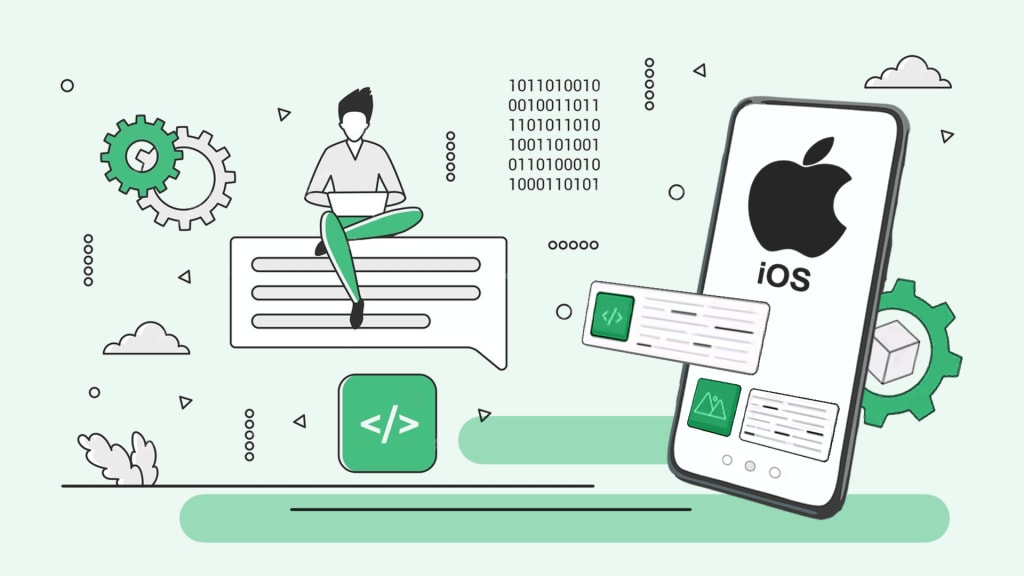iOS App Development: Practices, Tools, Benefits, and Cost
Unlock the secrets of iOS app development with our comprehensive guide. Discover practices, tools, and expert insights. Bring your app idea to life with us!

Before the age of mobile phones, mobile apps were in the minority. However, nowadays in the digital era, mobile apps have become crucial assets for companies and individuals. Together with forecasts of $935 billion for the Apple applications market by 2024, iOS application development is beneficial for business owners. From phases till tools we’ll explore everything you must know for developing an iOS app.
Understanding iOS App Development
Creating iOS apps is the process of writing software for Apple gadgets, namely iPhone, iPad, or iPod Touch. A profitable platform for developers and companies, the huge consumer database and the robust App Store are the two factors that mark iOS as an extremely competent trading platform. The iOS application creation process is a kind of an experience that needs a very high level of profundity into the Apple's environment that is not only limited to its modeling processes but also the languages and introduction stages as well.
iOS App development process
- Conceptualization: In this part, various application concepts are established. The developers do market study, which they use to pinpoint the key consumer groups of the product and set its basic features. Using tools like Balsamiq, MindNode, and AppAnnie is not only great for drafting ideas but also for designing user portraits and market research to uncover the competitors' advantages and weaknesses.
- Design: It is UI/UX designers who move the concepts into pleasant visuals and usable interfaces. Wireframing tools like Sketch, Adobe XD, and Figma not only help in making prototypes but also support in making mockups. I found out that designers concentrate on using simple, consistent, and intuitive interfaces in order to make the user interface more easy and effective.
- Development: Developers develop code in a variety of languages such as Objective-C and Swift, which they use to create applications within Xcode, Apple's integrated development environment (IDE). Coding, debugging, and testing are all the tasks which are the responsibility of Xcode which simplifies the process of development overall. Developers will adhere to coding standards, have modular coding, and use Git for version control systems that ensure fast working together.
- Testing and Deployment: QA developers work hard to carry out comprehensive testing in order to uncover any irritations or performance issues. Utilities like Test Flight and Firebase Test Lab help to execute app testing on other machines and ambience. After successful testing, the app will be sent to the App Store and through its procedures of deployment, the app users are ensured of a seamless user experience.
Modification of the given sentence: Main Tools for iOS App Development
- IDEs: Xcode is the key development system for app development on iOS. Provided there are many tools from coding to testing. The programme's easy plug-and-play development mechanism within Apple's i-world smooths the process.
- Programming Languages: Swift and Objective-C are the two major programs written for iOS. The sugary Swift platform, launched by Apple in 2014, is appreciated for its security, speed, and simplicity of use, meaning that most of the developers choose it.
- UI/UX Design Tools: Sketch, Adobe XD, and Figma are mobile apps that are used by UI/UX design to do their jobs. These tools help designers to create wireframes, UI mockups, and unique assets that fall in line with the aim of an application and meet the requirements of users.
- Testing and Debugging Tools: Through TestFlight, Apple's own testing platform, developers have the privilege to submit preview releases of their apps to selected beta users to get the feedback. Firebase's Test Lab provides cloud based compatibility testing and operations in different device and conditions environments.
- Version Control Systems: Git is vastly exploited for source control during iOS app development. Developers can efficiently handle codebases, monitor changes and work closely with team members due to the benefits of version control.
Benefits of Using These Tools
- Increased Efficiency: With the help of IDEs, programming languages, and design tools the developers can now carry out development phases quickly and profitability.
- Enhanced Collaboration: Version control's function and collaboration tool, both, support team work making it easy for software developers, designers, and testers to work together.
- Improved Code Quality: Testing and debugging aids are essential all through the development process as they employ the detection and elimination of bugs or performance issues. This leaves a way for a stable and secure app in the end.
iSO Application Development: The Most Effective Practices
- UI/UX Design Principles: Simple to use and memorable, having a consistent experience throughout the product, an easily accessible concept, and feedback are the core principles for delighting the customers’ journey.
- Coding Standards: According to Apple's coding convention, code modules, documentation, and version control all are key to make the code readable, maintainable, and friendly to collaboration.
- Performance Optimization: This processing is made possible through measures such as lazy loading, asynchronous operations, and optimized memory management hence the interaction of large volumes of data is done smoothly.
- Security Measures: Users trust reliability, security and privacy, and thus employing data encryption, secure authentication and testing input validation increases trust and confidence among users. The expenses to produce iOS mobile apps.
The cost of creating an iOS app is not constant since it largely depends on factors such as complexity level, app features, as well as developer rates. A fairly simple application that has very basic yet primary features can cost between $10,000 and $50,000, while a complicated application with enhanced features can be even more. The cost is likely to be affected by things like complexity of design, how long it takes to develop it, dependencies on third party resources and the cost of maintenance and support.
Conclusion
iOS apps development gives many benefits, including security advantage, brand value enhancement, targeted audiences, security transactions, and returns on investments instead. Through the appropriate use of best practices and proper tools, businesses can now build apps that are not only engaging and making profit but can also successfully place themselves in the ever-competitive digital marketplace. A price for the iOS app development of varying degrees depends on the case and complexity that as the result of the high quality output can be received in the future several times higher. Get even more tips here and other resources which will help you increase your competence in iOS app development.






Comments
There are no comments for this story
Be the first to respond and start the conversation.